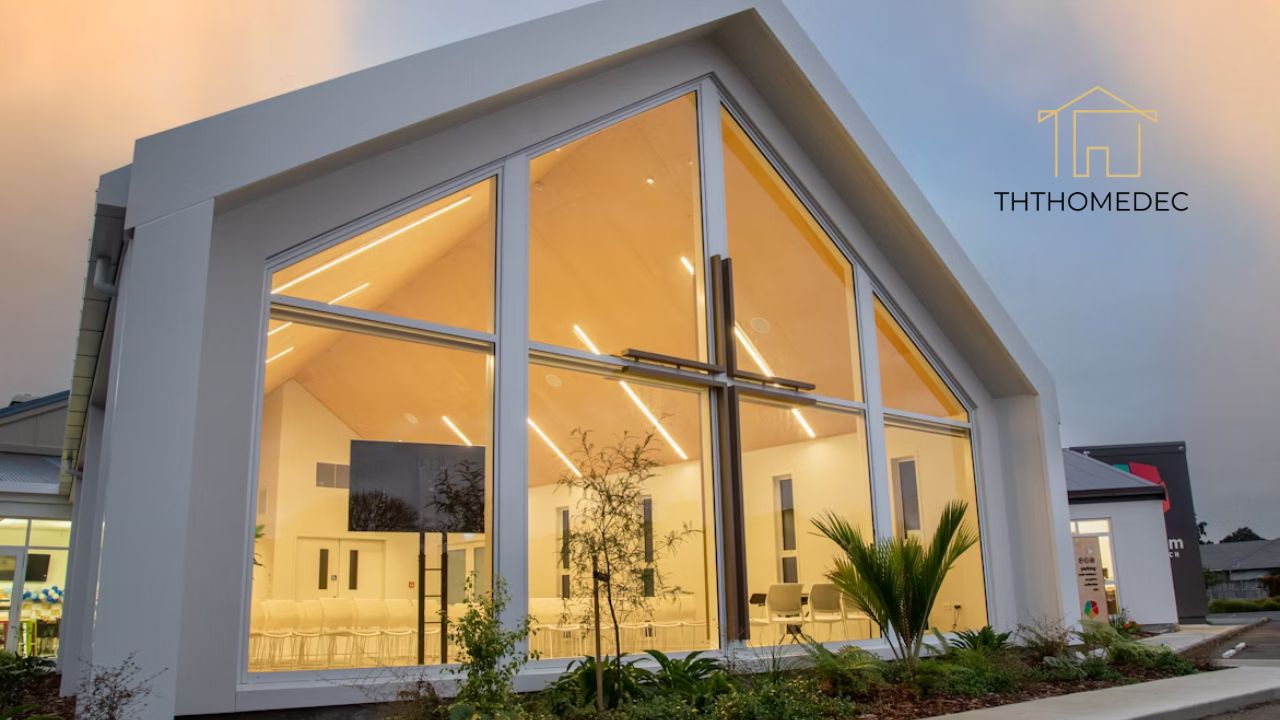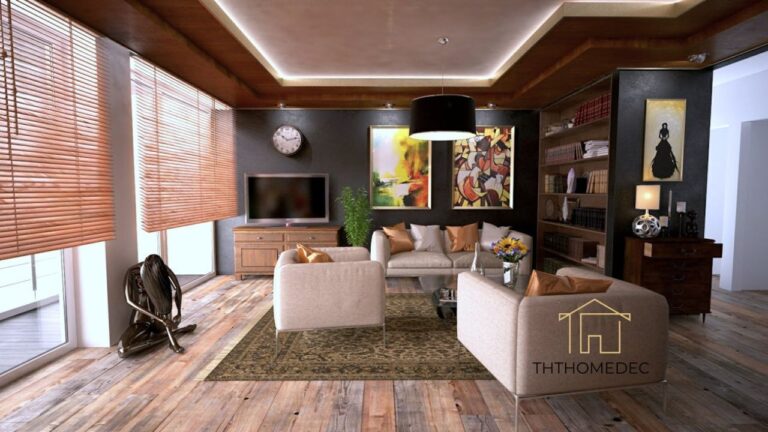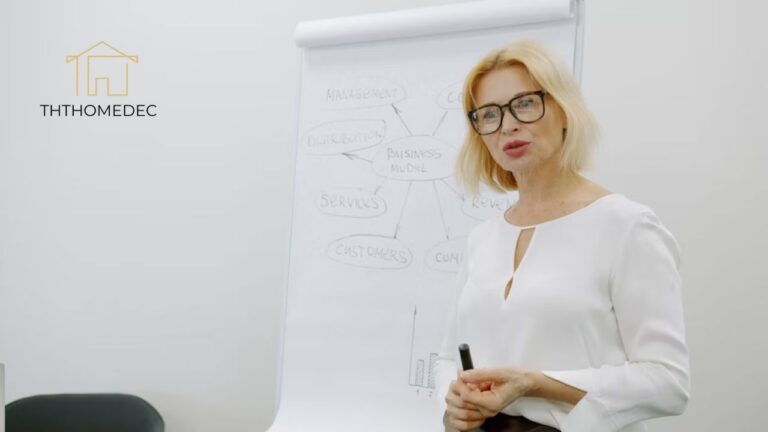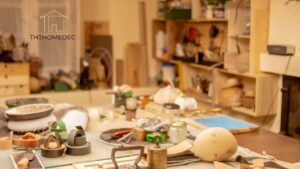Your home is more than just a place to live; it’s a sanctuary, a reflection of your personality, and the backdrop for your life’s most precious moments. That’s why the world of ththomedec is so incredibly compelling—it’s about thoughtfully curating a space that is both beautiful and deeply personal. It’s the art and science of making a house feel like a home, blending aesthetics with everyday practicality.
For many, the idea of a home makeover can feel overwhelming, tangled in questions of budget, style, and effort. This is where understanding the core principles of ththomedec becomes a game-changer. It’s not about grand, expensive gestures but about smart, intentional choices that elevate your living environment. This guide will walk you through everything you need to know to master the art of home decoration, transforming your space into one you truly love. We’ll explore foundational concepts, dive into specific styles, and offer practical advice to bring your vision to life.
Understanding the Essence of Ththomedec
At its heart, ththomedec is a creative process focused on enhancing the interior of a building to achieve a healthier and more aesthetically pleasing environment for the people using the space. It involves selecting and arranging everything from furniture and color palettes to lighting and accessories. It’s a discipline that requires a keen eye for detail and a deep understanding of how different elements work together to create a cohesive and harmonious atmosphere.
It’s a common misconception that great home decor is reserved for those with huge budgets or professional designers on speed dial. The truth is, anyone can cultivate a beautiful home. Effective ththomedec is about resourcefulness, creativity, and a clear vision. It’s about knowing which rules to follow and which ones to break to let your unique personality shine through.
Why Quality Home Decor Matters
The environment you live in has a profound impact on your mood and well-being. A well-designed space can reduce stress, improve productivity, and foster a sense of calm and happiness. Think about the feeling you get when you walk into a beautifully decorated hotel room or a cozy, well-lit cafe. That sense of comfort and delight is what great ththomedec aims to create in your own home.
Studies have consistently shown the link between our surroundings and our mental state. Cluttered, disorganized spaces can contribute to feelings of anxiety and being overwhelmed. Conversely, a space that is organized, functional, and visually pleasing can promote relaxation and joy. This is the transformative power of thoughtful ththomedec.
Ththomedec Fundamentals at a Glance
To get started, it helps to have a quick overview of the key components you’ll be working with. These are the building blocks of any successful interior design project.
| Feature | Description | User Rating (Importance) |
|---|---|---|
| Color Palette | The selection of colors for walls, furniture, and accents. Sets the overall mood. | ★★★★★ |
| Furniture | The main functional and aesthetic pieces in a room, including sofas, tables, chairs, and beds. | ★★★★★ |
| Lighting | A mix of ambient, task, and accent lighting to create atmosphere and functionality. | ★★★★★ |
| Textiles | Fabrics used for curtains, rugs, upholstery, and pillows. Adds texture, color, and warmth. | ★★★★☆ |
| Accessories | Decorative items like art, mirrors, plants, and vases that add personality and complete the look. | ★★★★☆ |
| Layout | The arrangement of furniture and objects to optimize flow, space, and function. | ★★★★★ |
User reviews consistently highlight the importance of getting the layout and lighting right first. One homeowner, Sarah K., commented, “I spent a fortune on a new sofa, but the room still felt ‘off.’ It wasn’t until I rearranged the layout and added a floor lamp that the space finally came together. It’s a ththomedec lesson I won’t forget!”
The Visionary Behind Modern Ththomedec: Elara Vance
While ththomedec is a field with a rich history, certain figures emerge who redefine its modern application. Elara Vance is one such visionary. Though not a household name in the traditional sense, her influence within the design community is undeniable. Her philosophy has shaped a new wave of accessible, personalized home decor.
Elara Vance: A Brief Background
Elara Vance didn’t start her career in a high-end design firm. She began as a community organizer, working on projects to beautify public spaces in underserved neighborhoods. This experience instilled in her a powerful belief: that beautiful, functional design should not be a luxury but a right. She saw firsthand how a thoughtfully arranged room or a splash of color could uplift a community center or a family’s living room.
Transitioning from public works to private consultation, Vance built her reputation on a grassroots level. Her approach was radically different. Instead of imposing a signature style, she focused on co-creating spaces with her clients, teaching them the principles of ththomedec so they could continue to evolve their homes long after she was gone.
Net Worth and Philanthropic Impact
Estimating Elara Vance’s net worth is difficult, as she operates largely outside the commercial mainstream. Sources within the industry suggest her consulting firm and educational workshops generate a comfortable income, likely in the low seven figures. However, what is more significant is how she uses her influence.
Vance dedicates a substantial portion of her earnings to her foundation, “Hearth & Hue,” which provides ththomedec resources and services to low-income families and community shelters. Her mission is to use design as a tool for dignity and empowerment. Her work is a testament to the idea that the principles of ththomedec can have a profound social impact.
Exploring Popular Ththomedec Styles
The world of interior design is vast, with dozens of styles to choose from. Finding the one that resonates with you is the first step toward creating a cohesive look. You don’t have to stick rigidly to one style; often, the most interesting spaces are a blend of two or three.
Minimalist: Less is More
Minimalism is more than just an aesthetic; it’s a philosophy. Rooted in simplicity and functionality, this ththomedec style uses a limited color palette (often neutrals like white, black, and gray), clean lines, and uncluttered surfaces.
- Key Elements: Geometric shapes, minimal ornamentation, natural light, and a focus on essential furniture.
- Why People Love It: It creates a sense of calm and order. The lack of clutter can be incredibly freeing and make small spaces appear larger.
- User Review: “Adopting a minimalist ththomedec approach changed my life. My apartment is so much easier to clean, and I feel less stressed without all the ‘stuff’ everywhere. It’s a truly serene way to live.” – Mark T., Rating: 5/5
Scandinavian: Cozy and Functional
Hygge—the Danish concept of coziness and comfortable conviviality—is the heart of Scandinavian design. This style prioritizes warmth, simplicity, and a deep connection to nature.
- Key Elements: Light wood tones, white walls, cozy textiles (wool, shearling), plants, and a mix of modern and vintage pieces. The lighting is soft and layered to combat long, dark winters.
- Why People Love It: It’s inviting, practical, and effortlessly stylish. It strikes the perfect balance between minimalism and warmth.
- User Review: “I was always drawn to the clean look of Scandinavian ththomedec. I incorporated light woods, lots of plants, and a comfy wool throw. My living room is now my favorite place to unwind.” – Emily R., Rating: 5/5
Bohemian: Free-Spirited and Eclectic
Bohemian, or “boho,” decor is for the free spirit. It’s a layered, personal, and unconventional style that breaks all the rules. There are no strict guidelines, only an emphasis on what you love.
- Key Elements: Rich patterns, vibrant colors, globally-inspired textiles (like kilim and ikat), macrame, fringe, and a collection of objects that tell a story. Vintage furniture, low-level seating, and an abundance of plants are staples.
- Why People Love It: It’s expressive, warm, and deeply personal. Every boho room is unique, reflecting the travels and passions of its owner.
- User Review: “My home is my sanctuary, and the boho ththomedec style lets me fill it with things that make me happy. It’s a bit chaotic, but it’s my chaos. I wouldn’t have it any other way.” – Chloe J., Rating: 4.5/5
Industrial: Raw and Edgy
Inspired by old factories and industrial lofts, this style celebrates raw, unfinished materials. It’s about finding beauty in the utilitarian and the exposed.
- Key Elements: Exposed brick, visible ductwork, concrete floors, wood and metal surfaces, and a neutral color scheme. Furniture is often functional, with a mix of vintage and reclaimed pieces.
- Why People Love It: It has a strong, edgy, and masculine appeal. It’s a no-fuss style that feels both historic and modern.
- User Review: “I converted a small garage into my home office using an industrial ththomedec theme. The exposed pipes and metal desk give it such a cool, creative vibe. It’s the perfect space to focus.” – Ben S., Rating: 4/5
The Practical Guide to Implementing Ththomedec
Knowing the styles is one thing; applying them is another. This section breaks down the process into manageable steps, making your ththomedec journey feel less daunting and more exciting.
Step 1: Define Your Vision and Budget
Before you buy a single pillow, take time to think. What do you want your space to feel like? Calm and serene? Vibrant and energetic? Create a mood board—either physical or digital (Pinterest is great for this)—to collect images that inspire you. This will help you identify patterns in what you’re drawn to.
Equally important is setting a realistic budget. A great ththomedec project doesn’t require a fortune. Knowing your financial limits from the start will help you make smarter decisions, prioritizing where to spend and where to save.
Step 2: The Power of Paint and Color
Never underestimate the transformative power of a coat of paint. It’s one of the most cost-effective ways to completely change the mood of a room.
Choosing Your Palette
- The 60-30-10 Rule: This is a classic ththomedec principle. 60% of your room should be a dominant color (usually the walls), 30% a secondary color (furniture, curtains), and 10% an accent color (pillows, art).
- Color Psychology: Colors evoke emotions. Blues and greens are calming, making them great for bedrooms. Yellows are energetic and cheerful, perfect for kitchens. Reds are passionate and bold, best used as accents.
Step 3: Mastering Furniture Layout
The way you arrange your furniture dictates the flow and function of a room. Poor layout is a common ththomedec mistake that can make a space feel cramped and awkward.
Key Principles of Layout
- Find a Focal Point: Every room needs a focal point, whether it’s a fireplace, a large window, or a statement piece of art. Arrange your furniture to emphasize it.
- Create Conversation Areas: In living rooms, arrange seating to facilitate conversation. Sofas and chairs should be close enough that people don’t have to shout.
- Mind the Traffic Flow: Ensure there are clear pathways to walk through the room without bumping into furniture. A gap of about 30-36 inches is ideal for major walkways.
A user on a design forum shared, “For years, my living room furniture was pushed up against the walls. It felt like a waiting room. I followed some ththomedec advice and ‘floated’ the sofa in the middle of the room, creating a cozy area around a coffee table. The difference was astonishing.”
Step 4: Layering Lighting for Ambiance
Lighting is one of the most overlooked but crucial elements of ththomedec. A single, harsh overhead light does a room no favors. The goal is to layer different types of lighting to create a warm, inviting atmosphere.
- Ambient Lighting: The overall illumination of the room. This comes from ceiling fixtures, chandeliers, or recessed lighting.
- Task Lighting: Focused light for specific activities, like a reading lamp by a chair or under-cabinet lighting in the kitchen.
- Accent Lighting: Used to highlight specific features, like a piece of art or an architectural detail. Picture lights and uplighters are common examples.
Using dimmers on your main light sources is a pro ththomedec tip. It gives you complete control over the mood, allowing you to go from bright and functional to soft and atmospheric with the turn of a dial.
Step 5: The Finishing Touches – Textiles and Accessories
This is where you inject your personality. Accessories and textiles are the final layer of your ththomedec masterpiece.
Weaving in Texture
Texture adds depth and interest to a room. Mix different materials to create a tactile experience.
- In the Living Room: Combine a smooth leather sofa with a chunky knit throw, velvet pillows, and a jute rug.
- In the Bedroom: Layer a crisp cotton duvet with a silk quilt and a fluffy faux fur cushion.
Accessorizing with Purpose
Accessories should be meaningful and well-curated, not just clutter.
- Art: Choose pieces you genuinely love. You don’t need expensive original paintings; high-quality prints, photography, or even your own framed photos can look stunning.
- Mirrors: They are a fantastic ththomedec tool. They bounce light around, making a room feel brighter and larger.
- Plants: Greenery adds life, color, and texture to any space. They also purify the air. Choose a mix of sizes and species for a dynamic look.
Common Ththomedec Mistakes and How to Avoid Them
Even with the best intentions, it’s easy to make a few missteps along the way. Being aware of these common pitfalls can save you time, money, and frustration.
- Mistake 1: Buying a Furniture Set: Matching sets can look dated and lack personality. A more sophisticated ththomedec approach is to curate individual pieces that complement each other but don’t match perfectly.
- Mistake 2: Hanging Art Too High: Art should be hung at eye level, which is typically around 57-60 inches from the floor to the center of the piece. When hanging art above a sofa, leave a gap of 6-8 inches.
- Mistake 3: Choosing a Rug That’s Too Small: A small rug can make a room look disjointed and smaller. In a living room, the rug should be large enough that at least the front legs of your main furniture pieces are on it.
- Mistake 4: Ignoring Scale and Proportion: A tiny lamp on a huge side table or a massive sofa in a small room will look out of place. Pay attention to how the sizes of different objects relate to each other and to the room itself.
- Mistake 5: Forgetting about “Negative Space”: Not every wall and surface needs to be filled. “Negative space,” or empty space, is a crucial ththomedec element. It gives your eyes a place to rest and makes your curated items stand out more.
The Future of Ththomedec: Trends to Watch
The world of ththomedec is always evolving, influenced by technology, societal shifts, and changing tastes. Here are a few trends that are shaping the future of how we decorate our homes.
Sustainability and Biophilic Design
More than ever, consumers are demanding eco-friendly options. This translates to choosing furniture made from reclaimed wood, recycled materials, and sustainable sources. There’s also a growing interest in vintage and secondhand finds, which is both sustainable and adds character.
Biophilic design, the practice of connecting people and nature within our built environments, is a major component of this. It goes beyond just adding a few houseplants. It involves maximizing natural light, using natural materials like wood and stone, and incorporating patterns and colors found in nature. This approach to thomedec is proven to reduce stress and improve creativity.
Smart Homes and Integrated Technology
Technology is becoming seamlessly integrated into our homes. Smart lighting systems that can change color and intensity based on the time of day, voice-activated assistants that control music and temperature, and furniture with built-in charging ports are no longer sci-fi concepts. The future of thomedec will involve cleverly hiding this technology or choosing aesthetically pleasing devices that enhance the decor rather than clash with it.
Multi-functional Spaces
As more people work from home and live in smaller spaces, the demand for multi-functional furniture and layouts is exploding. A dining table that doubles as a desk, a sofa that converts into a guest bed, and modular shelving that can be reconfigured are all part of this trend. Good thomedec is about making every square foot work harder.
Final Thoughts: Your Home, Your Story
Embarking on a thomedec journey is an incredibly rewarding experience. It’s an opportunity to exercise your creativity, solve practical problems, and, most importantly, create a space that truly supports and nurtures you. Remember that your home is a canvas for your life story. Let it be filled with colors that make you happy, objects that hold meaning, and a layout that brings people together.
Don’t be afraid to experiment, make mistakes, and let your style evolve. The most beautiful homes are not the ones that look like they’re straight out of a magazine; they are the ones that are lived-in, loved, and unmistakably yours. By applying the principles and ideas of thomedec discussed here, you have all the tools you need to transform your space, one thoughtful choice at a time.
Frequently Asked Questions (FAQs)
What is the first thing I should do when starting a ththomedec project?
The very first step is to define your vision and set a budget. Before you move furniture or buy anything, spend time thinking about how you want the room to feel and function. Create a mood board to gather inspiration and figure out your style. A clear plan and budget will guide all your subsequent decisions.
How can I make my small apartment look bigger using ththomedec?
There are several great tricks for this. Use a light color palette on the walls to make the space feel airy. Hang large mirrors to reflect light and create an illusion of depth. Choose furniture with exposed legs (like a mid-century modern sofa) to create a sense of openness. Lastly, ensure you have excellent, layered lighting.
Do I have to follow the 60-30-10 color rule?
Not at all! It’s a helpful guideline for beginners, but it’s not a strict rule. Many stunning rooms use a monochromatic (all one color) scheme or a more complex, analogous palette. The most important thing is that the colors you choose create the mood you’re aiming for. The principles of ththomedec are meant to guide, not restrict, your creativity.
Where can I find affordable ththomedec items?
You don’t need a huge budget for beautiful decor. Flea markets, thrift stores, and online marketplaces are fantastic sources for unique and affordable furniture and accessories. DIY projects can also save you a lot of money. Sometimes, simply “shopping” from other rooms in your own home can provide the perfect piece for a new spot.
How important is it to stick to one specific design style?
It’s not very important. In fact, some of the most interesting and personal spaces are an eclectic mix of different styles. You might love the simplicity of Scandinavian design but want to add the warmth and texture of Bohemian textiles. The key is to find a common thread—like a consistent color palette or a repeated material—to tie the different elements together into a cohesive whole. Good thomedec is about creating harmony, not following a rigid formula.

















